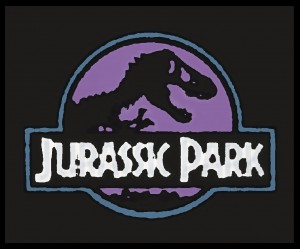 Pristine preservation of DNA is of critical importance in the study of ancient DNA. The structural integrity of the DNA molecule, contrary to the Jurassic Park tale, is not infinitely stable.
Pristine preservation of DNA is of critical importance in the study of ancient DNA. The structural integrity of the DNA molecule, contrary to the Jurassic Park tale, is not infinitely stable.
Damage to the DNA molecule in living organisms occurs naturally from normal metabolic and hydrolytic processes and from environmental factors such as ultraviolet light and radiation.
Damage to DNA in mammalian cells is known to occur 1 million times daily. While alive organisms can identify and correct these damages, the evolution industry has been reticent to address the stability of ancient DNA in the fossil record.
Ancient DNA Half-Life
While the stability of the DNA molecule has been known since the early 1970s, amazingly, the first report on the rate of DNA decay in fossilized remains was not published until December 2012. An international research team headed by Morten Allentoft while at Murdock University in Australia published their results in the Proceedings of the Royal Society based on carbon-dated dated fossils in the paper entitled “The half-life of DNA in bone: measuring decay kinetics in 158 dated fossils.”
The research team estimates an average decay rate of DNA extracted from leg bones of three extinct giant birds called moa unearthed in New Zealand, as measured in half-lives, to be 521 years. The bones from the 158 fossils, carbon-dated to be between 600 and 8,000 years old, had been recovered from three sites within 5 kilometers of each other, with nearly identical preservation conditions, including a temperature of 13.1 ºC.
With a 521-year half-life, only half (50%) of the original molecule would remain intact after the first 521 years. After another 521 years (1,042 years), only 25% of the original molecule would remain intact. Following 5,210 years, less than 0.01% of the molecule would be expected to remain intact.
Matt Kaplan, in an interview with computational evolutionary biologist Simon Ho of the University of Sydney in Australia and published in the journal Nature reported –
“This confirms the widely held suspicion that claims of DNA from dinosaurs and ancient insects trapped in amber are incorrect.”
An average half-life of 521 years in these fossilized bones (in situ), however, is 400 times slower than observed in in vitro laboratory tests. Allentoft notes in the report: that “the rate is almost 400 times slower than predicted from published kinetic data of in vitro DNA depurination [decay].”
As Colin Barras explains in the NewScientist, “With an estimated burial temperature of 13 ºC, the DNA’s half-life was 521 years – almost 400 times longer than expected from lab experiments at similar temperatures.” Since a 521-year half-life divided by 400 is calculated to be 1.3 years, after just 10 years, then, less than 0.5% of the DNA molecule would be expected to be found complete.
The DNA molecule has “limited chemical stability,” according to Tomas Lindahl of the London Research Institute. After storing 33 human postmortem muscle specimens, total DNA was found to be degraded by 21% in 3 days and 42% degraded in just 8 days.
“Few researchers have given credence to claims that samples of dinosaur DNA have survived to the present day, but no one knew just how long it would take for genetic material to fall apart. Now, a study of fossils found in New Zealand is laying the matter to rest — and putting an end to hopes of cloning a Tyrannosaurus rex,” explains science writer Matt Kaplan in an article in the journal Nature entitled “DNA has a 521-year half-life, genetic material can’t be recovered from dinosaurs.”
The science of determining the decay rate of DNA in situ is still investigational. According to Michael Bunce, co-author with Allentoft, age differences only accounts for 38.6% of the variation between the 158 bones studied.
“Other factors that impact on DNA preservation are clearly at work. Storage following excavation, soil chemistry, and even the time of year when the animal died are all likely contributing factors that will need looking into.”
In a Popular Science article, “What’s the half-live of DNA? And more importantly, is Jurassic Park accurate,” Amber Williams reports: “We believe this is the last nail in the coffin” of claims that scientists can get DNA from million-year-old fossils.
Darwin’s dilemma intensifies. Click on the Dating Fossils article for a broader presentation of the issues facing current dating methods.
Genesis
Contrary to earlier expectations in the 1990s stemming from Steven Spielberg’s Jurassic Park, ancient DNA can only exist for thousands of years − not millions of years. Charles Darwin, of course, never addressed DNA stability in The Origin of Species since the molecule was unknown at the time.
The new molecular survival and stability evidence highlights why there is often a disparity between the dating of ancient DNA and the Genesis account.
Refer to the Glossary for the definition of terms and to Understanding Evolution to gain insights into understanding evolution.
Update 2021
In March 2021, Karishma Matange, James M. Tuck & Albert J. Keung published in Nature Communications the study “DNA stability: a central design consideration for DNA data storage systems” reported –
“Eighty percent of the encapsulated DNA was recovered while only 0.05% of the unprotected dried DNA survived. Grass and colleagues estimated that encapsulation in silica particles could maintain DNA for 20–90 years at room temperature, 2000 years at 9.4 °C, to over 2 million years at −18 °C.”
Therefore, fossilized DNA specimens dated to be tens of thousands of years old by speculation and conjecture must be considered scientifically invalid until proven otherwise.

